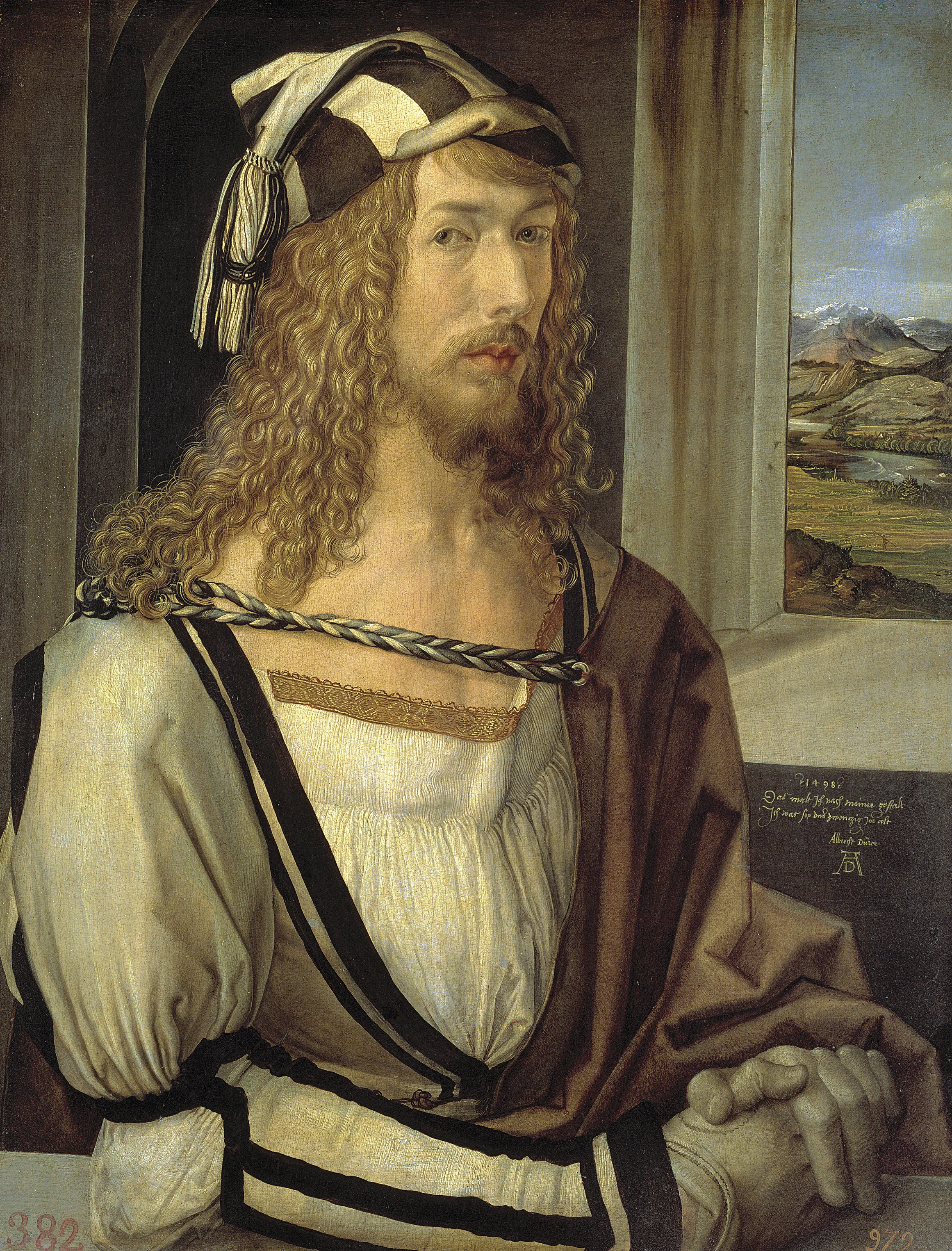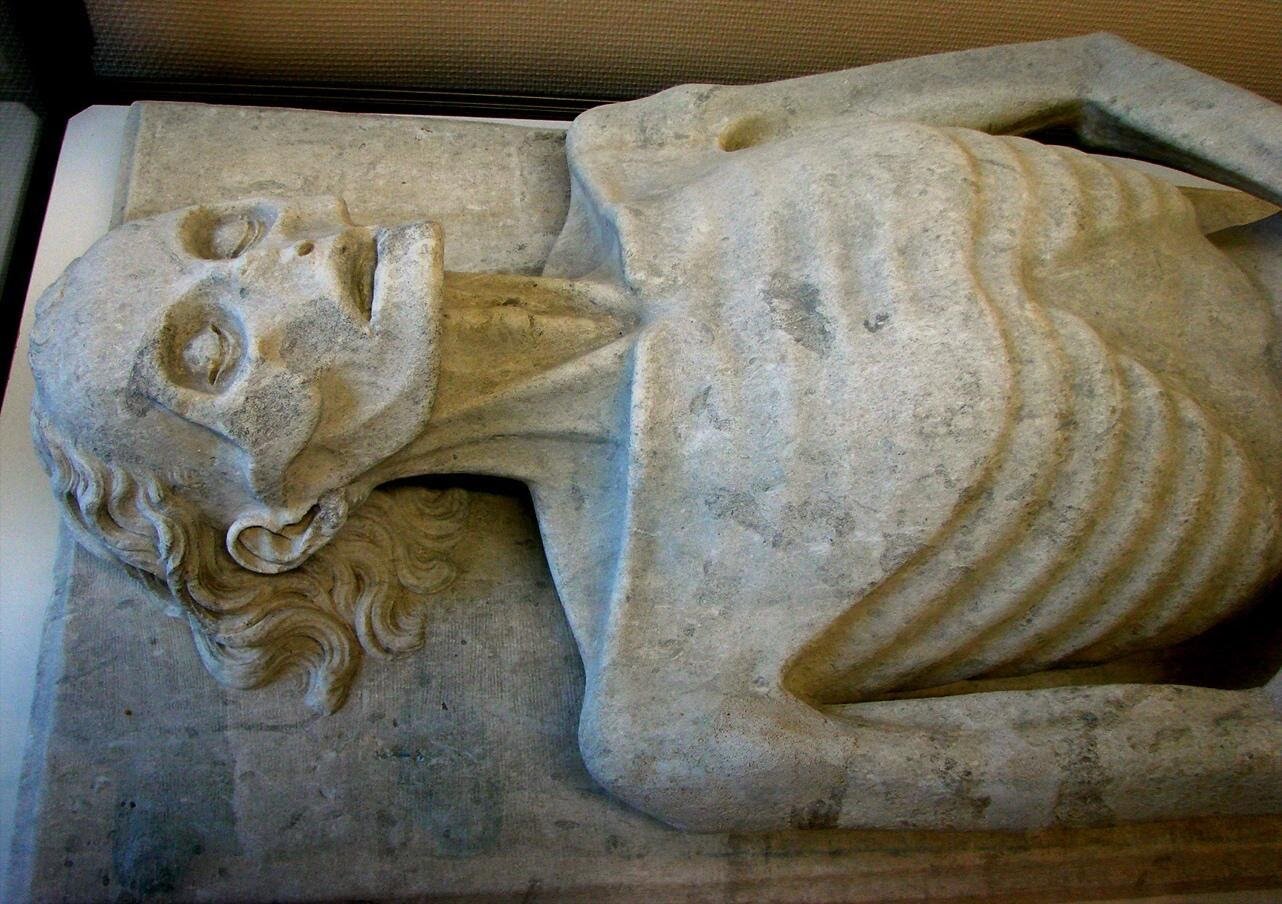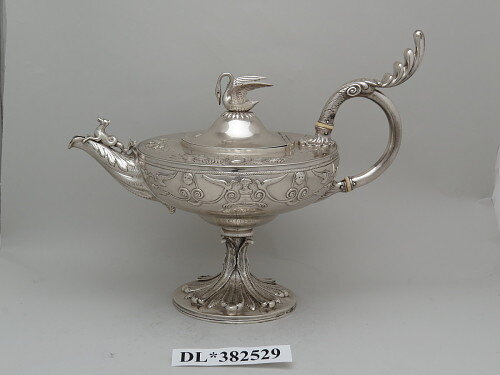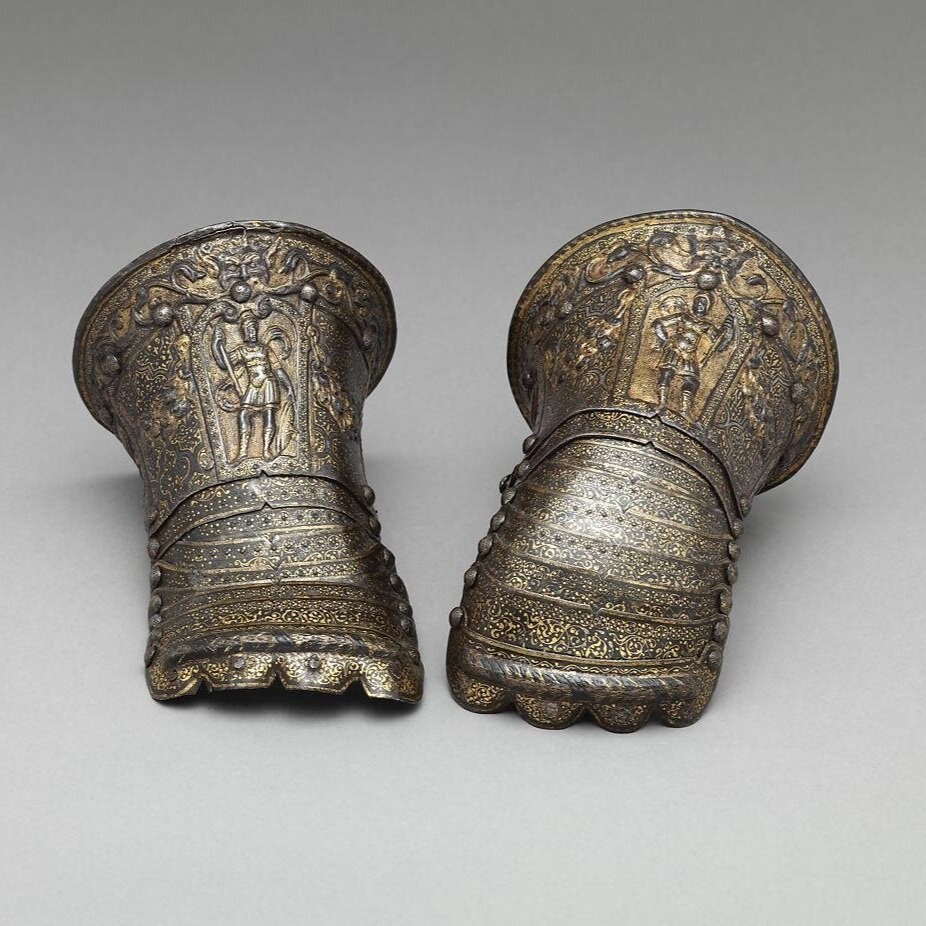
The Consequences of an Unfinished Christ
This paper considers several possible explanations for the state of unfinish of Albrecht Durer’s Salvator Mundi. The painting was done sometime around 1505, on the eve of the trip to Venice which would elevate Durer from regional phenomenon to European artistic icon. There is no record of the painting having been commissioned and no obvious explanation for his decision to start work on it. Despite its being unfinished, he kept the painting in his possession until the end of his life, after which his wife kept it until the end of her life ten years later. It was eventually sold into the collection of the grandson of his close friend, Willibald Pirckheimer. He did not recycle the materials. All of this evidence suggests a reason for the painting’s survival greater than mere chance. Possible explanations range from the purely pragmatic to the abstract spiritual. The painting could have been a teaching tool for the apprentices in Durer’s workshop. It may have had sentimental value to Durer, as a reflection of the evolution of his relationship with God. He may have also realized that existing in a state of unfinish gave the artwork additional meditative value that it would not have otherwise had. This paper explores each of these possibilities in depth, as well as the legacy of such an object into modern times.

“Rust-Flavored Air”:
The verso of Charles Burchfield’s 1920 watercolor Hillside Homes reveals contextual information not afforded by the work’s title. Here, the artist’s hand-written inscription reads: “LOCALITY-ON THE OHIO RIVER/BETWEEN E. LIVERPOOL + WELLSVILLE.” Roland Barthes observes that such accompanying text functions as a “parasitic message” intended to load an image by quickening its connotation procedures. Taking this “parasitic message” as starting point, this paper employs new materialism and ecocriticism to read Hillside Homes as Burchfield’s toxic discourse on environmental damage caused by southeastern Ohio’s thriving clay industry during the early twentieth century. My analysis examines Hillside Homes in relation to contemporaneous textual accounts of the region’s ecological welfare from the artist’s personal journals and the geologist James Harold Hance’s 1918 PhD dissertation “Geology and Mineral Resources of the Wellsville, Ohio, Quadrangle.” Ultimately, this watercolor is both a prescient commentary on ecological toxicity and a material product of distributed agency that records natural degradation not only in subject matter, but also in its deteriorated physical condition resulting from environmental exposure. Conceiving of Hillside Homes as an assemblage—Jane Bennett’s term to describe the complex, interconnected, and surprising networks of agents that act upon material things—helps to explain one of its distinct visual features: the soiled yellow smog that discolors the blue sky. A study of this unplanned formal quality, a result of the paper’s reaction to relative humidity, acidity, or pollution, challenges 2 preconceived notions of artist intentionality. Heeding the call of Lawrence Buell, this piece aims to reinvigorate scholarly understanding of Burchfield’s work through a more earth-conscious mode of art historical inquiry.

A Tale of Two Murals:
This piece examines the history and legacy of Chicana/o muralism in the historically Chicana/o neighborhood of La Alma-Lincoln Park in Denver, Colorado. Members of the Chicana/o community who participate in, observe, or support mural-making contribute to physical transformations of the urban landscape while also creating memories that result in affective attachments to these spaces, contributing to the process of placemaking and a communal sense of belonging for this marginalized group. In recent years, street art has gained popularity in Denver, increasing competition for public spaces. Many people claim that street art culture provides Denver a positive form of public art that beautifies the city and breaks up the monotony of the urban landscape. By comparing two murals in La Alma-Lincoln Park, one Chicana/o mural and one street art mural, this piece demonstrates how city officials, urban planners, and corporate developers have effectively co-opted street art practices to commodify the urban landscape in the name of the “creative city.” Street art becomes a type of marketing scheme through which to communicate a neighborhood’s “authenticity” and attractiveness to visitors and members of the upper classes to accumulate profit through tourism and development plans. The appearance of street art murals in La Alma-Lincoln Park transforms its distinctly Chicana/o public spaces, negatively affecting longtime residents’ sense of belonging and signaling the gentrification of public space. The author situates transformations to public spaces as not an effect of gentrification, but rather a cause. This thesis challenges public sphere theory by emphasizing the importance of public space to counterpublic spheres. The Chicana/o counterpublic has repeatedly faced geographic displacement at the hands of the US government and the Anglo-American public, rendering access and control of public spaces especially meaningful.

The Archivist’s Creative Act
This paper explores the value of Tate Archive as it fits into a postmodern paradigm. Archivist Terry Cook defines the postmodern archive as highlighted by several key tenets, including emphasizing the creative or authoring intent or process behind the record; acknowledging the archivist as active mediator of records with innate subjectivity and bias; centering ways to capture, display, and share archival information; and focusing on the context of material rather than universal authorial voice. Overall, Tate Archive has taken an active, postmodern approach, as defined by Terry Cook, by enforcing the continuous value of the materials via expanded access, diversifying its users, and emphasizing the new dynamic and interlacing ways that users can experience and consequently preserve their material. By prioritizing transparency, access, and participation across platforms, Tate Archive has paved a path to empower and enrich users in the modern age.

Cambodian Artistic Resilience:
Museums are among the different agencies available to help people better themselves. One museum that strives to do this is the Cambodia Peace Gallery (CPG), located in Battambang, Cambodia. It was established in 2018 by the Center for Peace and Conflict Studies (CPCS) by Cambodian native and Khmer Rouge (KR) genocide survivor, Soth Plai Ngarm. The CPG strives to tell a story of Cambodian resilience and achievement, despite a longstanding conflict history. Through gallery exploration, genocide survivors are meant to experience trauma recovery by facing emotions they are typically told to suppress in their face-saving culture. All museum efforts are driven by a desire to showcase Cambodia’s dynamic story in a way that inspires visitors to become actors for peace. The CPG’s mission of informing the public about peace and how to get there ultimately encourages healing from the KR genocide (1975-1979). One of the most recent exhibits the CPG has committed itself to explores refugee camp-based grassroots efforts founded to preserve poignant parts of Cambodia’s cultural identity. Specific performing arts of this nature are demonstrated in the work of past royal ballet dancer, Van Savay, whose work is captured by American photographer, Sharon May. Relief efforts are also manifested in the social enterprise of Phare Ponleu Selpak (PPS). In collaboration with May and PPS, the CPG’s exhibit explores how the reintroduction of Khmer arts has linked creative expression, identity healing, and hope for the future. Most importantly, the rebirth of art and culture has allowed Cambodians to imagine a future for their country. By presenting this information, the museum’s agency will advance the work started in the refugee camps and promote sustained present-day resilience.



A Portrait of Death
This article delves into the topics of medieval tomb sculpture in Europe, memento mori spirituality in the fourteenth and fifteenth centuries, portraiture, the Black Death and Roman Catholic response, and the complex relationship between the living and the dead. By introducing medieval tomb sculpture with the notion that the transi tomb acts as a complete stylistic antithesis to the norm, the author suggests it may have been a direct result of the Black Death, the Late Medieval Crisis, and the Roman Catholic Church. In studying the transi tomb of Guillaume de Harcigny, a French physician who was made famous by operating on the skull of King Charles VI, this piece aims to address the question: If this is a sculpture of a dead body, can it still be considered a portrait? Studying death during the Middle Ages the critical linchpin in understanding transi tomb sculpture in relation to portraiture. The dead (and the harsh reality of death) were interwoven into the fabric of social life, representing a slightly distant group of people. Guillaume de Harcigny’s transi tomb, therefore, encapsulates the unique personality of Harcigny while simultaneously representing an entire social class altogether. That is why, the ultimate answer to the question is yes, Harcigny’s tomb is a portrait.

The Power of Museum Contexts to Shape Change:
The 20th and 21st centuries have seen an increase in activist art practice. Activist art is not only created in defiance of social and political norms and policies, but also demands positive institutional changes through increased awareness brought about by artistic forms. In the current post-occupy condition, activist art has proliferated in the streets, but also in the museum sphere as well. Historical and contemporary activist art has increasingly been collected and displayed by museums for both their aesthetic and idealistic qualities. This raises questions in both activist and museum communities of whether activist art belongs in a museum, and if its message is diametrically changed in this new context. This essay considers these questions through three case studies of activist art exhibited in American art museums in the past twenty years: The Interventionists: Art in the Social Sphere at the Massachusetts Museum of Contemporary Art (2004), Agitprop! at the Brooklyn Museum of Art (2015), and An Incomplete History of Protest: Selections from the Whitney’s Collection, 1940–2017 at the Whitney Museum of American Art (2017). These three case studies reveal how new interpretations, juxtapositions, and relationships of and between activist art objects lead to new ways of analyzing the museum’s role as a public institution. Each exhibition encourages innovation in the museum sphere; whether through placing artists as curators, commissioning community specific activist works, or internally critiquing the museum. Through these examples it becomes clear that exhibitions of activist art can be a vital resource for museums to utilize new strategies to fulfill their missions in socially engaged ways.

A Tea Set, A Bell, and A Wall:
The Octagon, an architecturally unique Federalist house right across the street from the White House, was home to the Tayloes, one of Virginia’s wealthiest plantation enslaving families. After 1814, the Tayloe’s lived in the Octagon permanently. This paper focuses specifically on the time frame around 1828 after John Tayloe had died, leaving Anne Tayloe widowed in D.C. during tumultuous times. “A Tea Set and A Bell: Spatial Distribution of Power and Control at the Octagon” explores the way that three objects, a tea set, wall-mounted bells, and the outer wall of the Octagon House in Washington, D.C., can help weave a narrative about white womanhood, enslavement, and power. The narrative centers on the matron of the house, Anne Tayloe, and the ways that the material qualities of these objects expose stratification and reliance. The objects are interpreted in order to illustrate the way that the very notion of white womanhood relied upon the labor of enslaved people and, specifically, enslaved Black women. The paper uses the study of objects, the Octagon’s archive, and theories such as the Cult of White Womanhood as evidence for these dynamics. The paper touches on the themes of leisure, safety and labor, and the ways that they are each distributed along stratified societal and racial lines.

Machines in the Garden:
Richard Neutra’s designs for private houses in the 1930s simultaneously emerge from the Machine Age and resist it. In the 1930s, the United States was in the middle of the time period categorized as the Machine Age, roughly the period between the two world wars. America in the 1930s was in the throes of a love affair with technology, machines, and the products they shaped. This paper examines the ways in which Neutra identified his private houses as “machines,” specifically as “machines in the garden.” It is this distinction and association with nature that separates Neutra from many of his peers categorized in this international movement of the machine aesthetic. Examining his work and the epoque in which they were designed, this paper considers Neutra’s decision to adopt a language of the machine over a more humanistic description of the residences he created. Did Neutra’s language acknowledge the contemporary shift towards a more machine-driven material culture, or did he see his homes as true machines, themselves?

Cultural Consumption, Colonialism, and Nationalism in an Egyptian Alabaster Scarab Beetle
Within a scarab beetle that was acquired during my travels in Egypt, one can read evidence of Egyptian history, both the European imperialist efforts as well as the Egyptian nationalist past, each often expressed through cultural consumption that continues even into today. Ultimately, my scarab beetle is a souvenir from my own travels in Egypt and thus is also taking part in this cultural consumption like so many other souvenirs. I argue that while my scarab beetle is representative of Egyptian culture, it is also part of this broader history of colonial consumption which then triggered the subsequent Egyptian response of manufacturing souvenirs for this demand. Eventually, modern Egyptians also came to foster nationalist sentiments and contest colonial rule, which then encouraged further consumption of Egyptian material culture, although from a place of nationalist pride. These nuances will be further examined throughout this paper, through the use of contemporary literature such as British news articles and short stories, as well as the Egyptian nationalist responses.

In the Absence of Body Hair:
This paper focuses on a painting by the Safavid artist Riza-i Abbasi called “Reclining Nude” (ca. 1590) from Isfahan, Iran. The image portrays a naked female figure dressed in diaphanous cloth resting near a small stream. She holds a letter in her hand and appears to be daydreaming or contemplating with her eyes closed. Such printed images circulated in Safavid Iran through European merchants and Christian missionaries who were invited to the court of Shah Abbas I (r: 1588-1629). Scholars have considered this image to be based on a Renaissance engraving of Cleopatra by Marcantonio Raimondi.The suggestion that the recumbent nude of Riza Abbasi was worked from the Cleopatra engraving of the Italian Renaissance printmaker Marcantonio Raimondi (ca. 1480-1534) plays into the notion that a Persian woman was assumed to be European solely due to her naked form. Even the name “Reclining Nude” inherently imposes the concept of the farangi and further removes the subject from her Persian attributes; however, the depiction of Riza Abbasi’s nude female follows the traditional concept of ideal women in Persian literature. In this paper, I will further analyze the imposed European identity on Riza Abbasi’s nude. Through this examination, I will argue that the theme of a female nude with long dark hair without body hair has its roots in the love portrayal of the beloved from Persian poetry and paintings rather than a European prototype. Furthermore, I will examine Reclining Nude’s Persian origins with the implications of her body hair, or lack thereof, derived from depictions of the archetypal pubescent beloved in Persian literature.
CW: This article features discussion of past sexual practices that included the involvement of children, which may make some readers uncomfortable, anxious, or angry. Please continue at your own discretion.

Winckelmann Revisited:
In 1964, Andy Warhol released a short film titled Blow Job. The film captures a man with an ecstatic facial expression, presumably due to his reception of oral sex. Watching Blow Job, we are voyeurs to a scene of mystery and homoeroticism, invoking our imagination as to what could or could not be happening beyond Warhol’s camera lens. When the film was first released, viewers heckled it and attempted to block the monitor. Warhol was homosexual. We have missed Warhol’s full intentions because of marginalization embedded in Art Historical discourse from its beginnings in the eighteenth-century. I would like to rethink Warhol in light of Johann Joachim Winckelmann, the so-called Father of Art History. Warhol was aware of Winckelmann’s art historical traditions and reflected on them in his own practice.

The KitchenAid:
First invented in 1908 for professional bakers, the KitchenAid was already being marketed to women for their homes by 1919, and within a few years had become a staple of prosperous suburban homes. The KitchenAid holds a surprising amount of meaning in the American mind. Over the years the KitchenAid has become a cultural symbol of prosperity, progression, idyllic suburbia, female duty, and family values. The history of the KitchenAid connects closely with a major shift that was occurring in America at the turn of the 20th century. Domestic servants were falling out of favor and suddenly affluent women were responsible for the domestic tasks in their homes. Tools like the KitchenAid made this possible, but also increased standards, and created a middle class ideal of home economics, an idea of a wife who is expert in her home duties. Kitchen appliances became a symbol of the American future, a new woman, and a new home. Paradoxically evoking ideas of both modernization and traditional domesticity, the KitchenAid maintains its multiplicity of meanings through its design. An unchanging aesthetic which balances beauty, functionality, and durability, has made the KitchenAid iconic, and has endowed it with a sentimentality that traverses generations, a sentimentality for the future its past users imagined.

William Holman Hunt’s Hireling Shepherd:
Typically understood as a pointed criticism of the English clergy, the message of The Hireling Shepherd by William Holman Hunt is uncovered in Beaulieu’s paper as a complex intersection between humankind, nature, and religion. Beaulieu applies an ecocritical approach to argue that, amid rapid and aggressive industrialization in England, The Hireling Shepherd represents an early articulation of a theory of environmental change steeped in the language of Christian theology. Beaulieu argues that Hunt deploys the Christian parable of the bad shepherd—inattentive to his flock—to draw attention both to the loss of morality in English society as well as its nefarious impact on the natural world. A study of Hunt’s artistic ideology points to a “Victorian ecology” which dictates that nature is balanced and fundamentally moral. Natural harmony for Hunt was thus a reflection of religious, divine order. Introducing Timothy Morton’s theory of the “Victorian hyperobject,” Beaulieu further elucidates Hunt’s understanding of the intricate, divine relationship between humankind and nature, connecting what he saw as the consequences of a transgression of Christian morality with a degeneration of the natural order. For Hunt, a degradation of the natural environment is thus fundamentally a product of a society which loses its spirituality. Through her analysis, Beaulieu forwards a theory that with The Hireling Shepherd, Hunt was warning against the dangers of a burgeoning atheism and a negligent clergy, while proclaiming a rebirth of the religious spirit as the solution to a deteriorating Victorian society and ecology.

Kid Gloves:
The body of the early-modern ruler would never truly be his own. Instead, it served as the physical embodiment of the broader nation state. For the Hapsburgs in the sixteenth century, armor was one key method for uniting the physical body of the king with the military prowess of the nation. This process began at a young age: in the case of Philip III, at the age of seven, when he received a suit of armor produced by Milanese armorer Lucio Piccinino. This paper unites a visual study of gauntlets made for Philip III with studies of the contemporary portraits of Philip III by artists at the Hapsburg courts and historical analysis of Phillip’s education. By analyzing each of these sources, it becomes clear that Phillip’s prince hood was caught in a crossroads between the ancient and the modern. He at once embodied the classical heritage of Greece and Rome, indicated by the decorative program of the armor, and the future of the country, suggested by the armor’s contemporary form and function.


Sir John Soane’s Maori Spear
The Sir John Soane’s Museum, an exceptional house museum that holds the personal collection of its namesake, provides a unique context for a case study on objects within museums and personal collections. In focusing on the artefacts in the museum, in particular object number M 607- ‘a Maori spear’, the theoretical framework of object biography is utilised to provide a more holistic understanding of this artefact beyond that presented by the institution that holds it. In considering the changing attitudes and perceptions of objects in the museum, a more comprehensive understanding of this objects’ relevance in the Sir John Soane’s Museum and beyond is discussed.

Autonomy and Power:
Compounded by assumptions of ‘common knowledge’ and skepticism of ‘pagan’ traditions, an incomplete understanding remains about the lives, training, and role of Maya scribes due to the destruction of prior accounts. By analyzing representations of scribes created by scribes across a variety of extant media including written accounts in codices, vessels, and incised bones, scholars can uncover the complex and nuanced standing of scribes. While pictorially depicted with less stature and prestige than rulers, scribes were revered in the court and possessed implicit power over rulers, and by extension, their subjects, as it was the scribes who wrote the first draft of their group’s legacy, recorded significant ritual practice, and acted as a conduit to ruling legitimacy by recording genealogy and divine history. The following paper employs visual analysis and primary source research to underscore its argument that Maya scribes possessed autonomy and power, and a strong connection to the divine that manifested through their behavior, status, and sense of self.